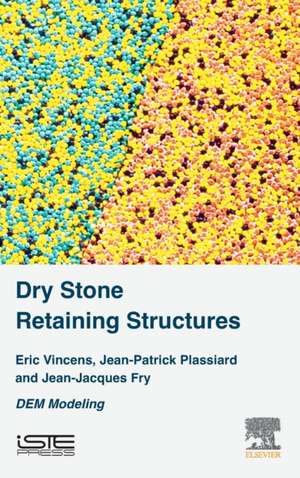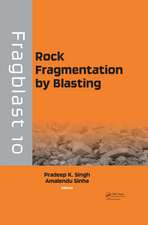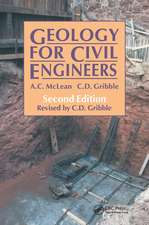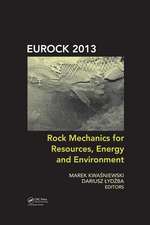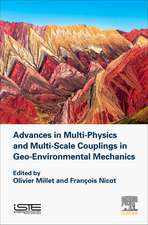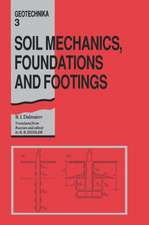Dry Stone Retaining Structures: DEM Modeling
Autor Eric Vincens, Jean-Patrick Plassiard, Jean-Jacques Fryen Limba Engleză Hardback – 27 ian 2016
Many of these structures are older than one hundred years and sustain damage due to ageing; this places the owners in front of a challenging issue. Usual scientific tools cannot address the specific behavior of such structures. Due to the discrete nature of the system, a large amount of energy can be dissipated at contact level before failure of the structure. The shape, arrangement and possible breakage of blocks may play a major role in their overall behavior, specific to these structures. This book brings an overview of the DEM technique to model the behavior of discrete civil engineering structures. Physical models, modeling and site measurements are all explored, helping the civil engineer evaluate the behavior of unique structures.
- The only DEM technique to model the behavior of discrete civil engineering structures
- A specific and sophisticated tool to address the general features observed on site
- Details physical models, modeling and site measurements
Preț: 410.99 lei
Preț vechi: 446.73 lei
-8% Nou
Puncte Express: 616
Preț estimativ în valută:
78.64€ • 82.28$ • 65.33£
78.64€ • 82.28$ • 65.33£
Carte tipărită la comandă
Livrare economică 26 martie-09 aprilie
Preluare comenzi: 021 569.72.76
Specificații
ISBN-13: 9781785480805
ISBN-10: 1785480804
Pagini: 162
Dimensiuni: 152 x 229 x 19 mm
Greutate: 0.41 kg
Editura: ELSEVIER SCIENCE
ISBN-10: 1785480804
Pagini: 162
Dimensiuni: 152 x 229 x 19 mm
Greutate: 0.41 kg
Editura: ELSEVIER SCIENCE
Public țintă
Researchers, rockfill dam owners, engineers, consulting engineers on dam engineeringCuprins
Chapter 1. Dry Stone Retaining Walls1.1. Introduction1.2. Plane slope dry stone retaining walls1.3. Highway dry stone retaining walls1.4. ConclusionChapter 2. Rockfill Dams with Dry Masonry2.1. Introduction2.2. Dam performance and rockfill behavior2.3. Numerical modeling of dry stone rockfill dams2.4. Results of analysis and interpretation2.5. Physical tests for DEM model qualification2.6. Conclusion
